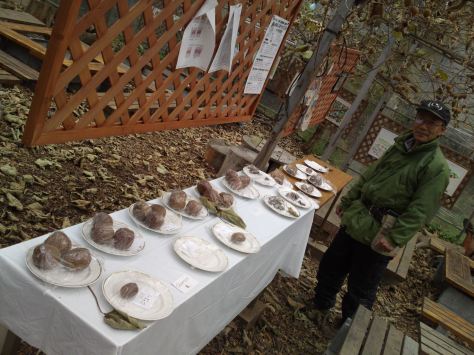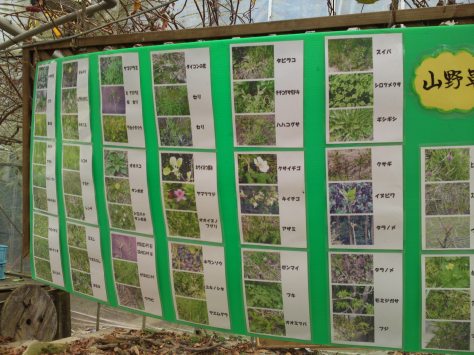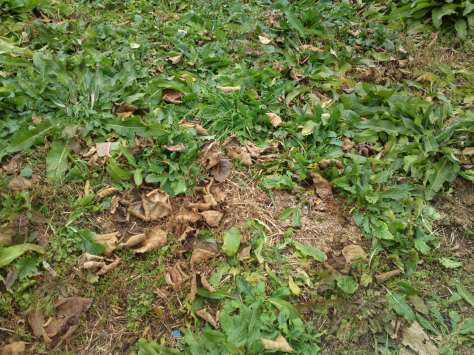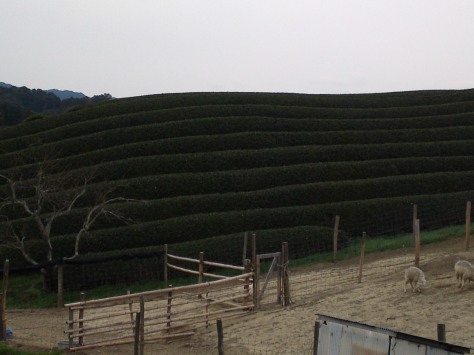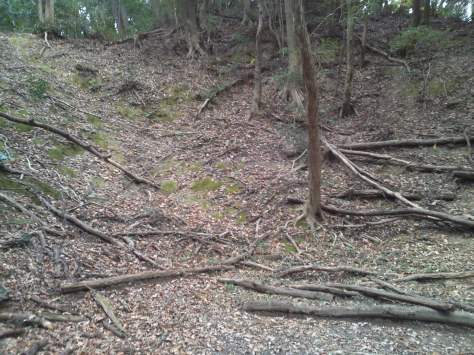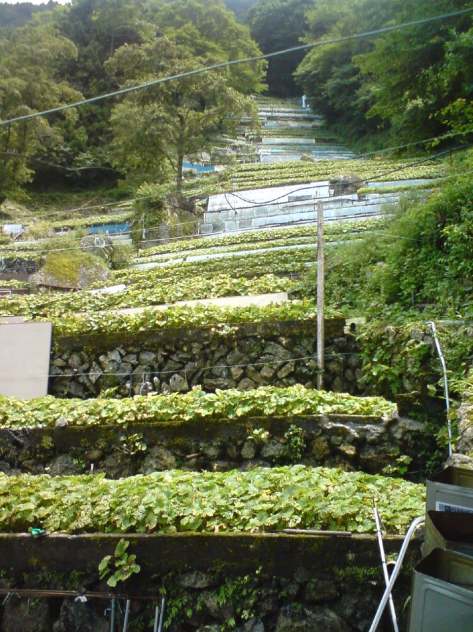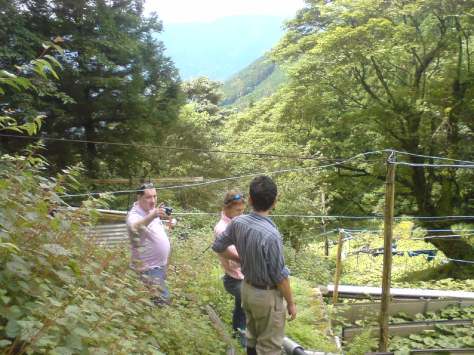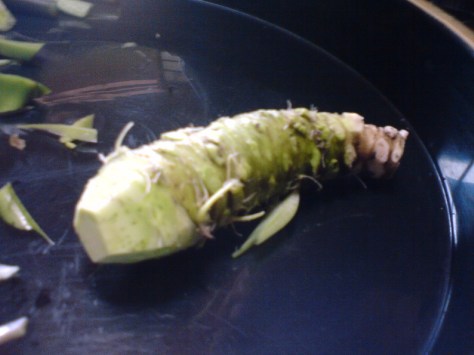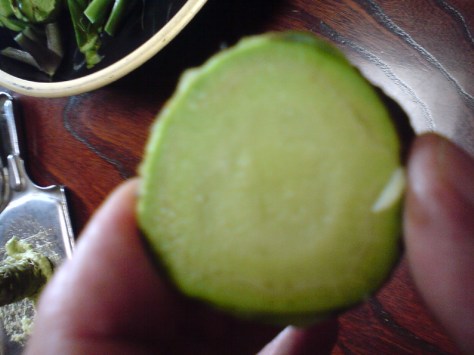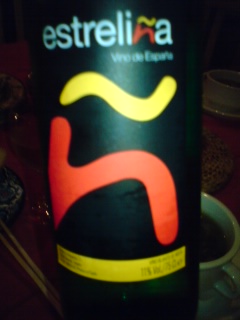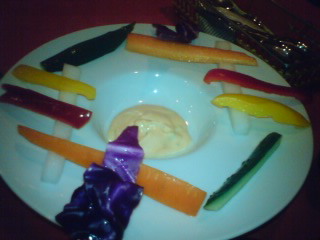Masatoshi and Tsuneyo Hirano/平野正俊・常代 at Kiwifruit Country Japan in Kakegawa City.
“Let’s introduce the greatness of the nature, importance of agriculture and taste of the real thing! Let’s learn together! Discover the valuable life!” is Masatoshi Hirano’s motto, in his own words, for farm management.
Entrance to Kiwifruit Country Japan
Mr. Masatoshi Hirano (and his two sons, too) speaks fluent English, because he spent a long time researching about citruses in four different States in the US before starting agriculture at his parents’ farm. His family has seen a lot of history go by as he is the 19th generation!
Nonetheless, as a youngster he understood that tradition was one thing, and good farming management another.
Kiwi fruits across the parking lot!
This led him, originally against his parents’ disagreement, to enlarge the family enterprise and introduce new cultures.
One was that of kiwifruit which he started from a single spoonful of seeds he had brought back home!
Agritour programs in front of the shop.
Then for the last 21 years he has expanded the cultivated land to include the largest Kiwifruit Agritour Orchard in Japan, tea, organic citruses, organic vegetables, organic edible flowers, space for domestic animals (as food and pets), self service stand direct sale shop, a whole forest for kids and adults alike, a BBQ area capable of welcoming 500 guests, a campsite, onsite field classes for children and students and agritours for Japanese and foreigners.
Baby goat.
A pet sheep.
A pet goat.
Pet rabbits.
Mischievous baby goats!
A baby pig, not a wild boar!
A peacock (there are two varieties, actually!)!
Kiwifruits, according to varieties (he grows 80 of them and conduct experiments on 500!), are either grown in an enormous greenhouse (which also serves as an BBQ and event space) or in open-air fields.
This kiwifruit tree wood is actually very popular with local artists!
Another great way to recycle nature!
Greenhouse-grown kiwifruit on display for practical information!
Kiwifruit varieties ready for sampling!
One can study about kiwifruits in Japanese and English while eating them!
Chickens for their meat and eggs.
More chickens!
And even more chickens! These are pets kept together with rabbits!
And more chickens. These always seem hungry!
The whole range of edible organic flowers and mountain vegetables/sansai/山菜 grown on site!
Organic shiitake.
Organic pumpkins!
Peaceful sheep.
Organic mandarines/mikan/蜜柑.
The grass and plants are left to grow naturally from the soil mixed with natural compost.
Another variety of organic mandarines.
Tea fields.
Vast open-fields of kiwifruit trees. Would you believe that Mr. Hirano pollinate them all by hand? A back and shoulder-breaking work!
A view inside the very old forest. It is actually crossed by a centuries-old path!
Small concerts are organized in that space inside the forest!
A kids’ heaven!
Look at these air-breathing roots. Now, this is an ancient tree!
100% organic potatoes sold at the shop!
Kiwis on sale at the shop.
One can eat as many as one wants onsite for a fee!
All kinds of varieties and packaged kiwifruit can be sent all over Japan directly from the shop!
These are the ones I took back hoe!
Obviously this is only the first of a long series of articles as the place will have to be visited every month by your servant or reporters from Agrigraph!
Kiwi Fruit Country/Experience & Learning Farm
Masatoshi & Tsuneyo Hirano
436-0012 Shizuoka Ken, Kakegwa Shi, Kamiuchida, 2040
Tel.: 0537-22-6543
Fax: 0537-22-7498
Free dial: 0120-014791
E-mail: wbs02626@mail.wbs.ne.jp
HOMEPAGE(Japanese, but phone calls can be taken in English)
Business hours: 09:00~17:00
BBQ (even by rainy weather) and tours possible on reservation.
RECOMMENDED RELATED WEBSITES
Mummy I Can Cook! by Shu Han in London
Pierre.Cuisine, Francescannotwrite, My White Kitchen, 47 Japanese Farms Through The Eyes of Its Rural Communities, Foodhoe, Chucks Eats, Things that Fizz & Stuff, Five Euro Food by Charles,Red Shallot Kitchen by Priscilla,With a Glass, Nami | Just One Cookbook, Peach Farm Studio, Clumsyfingers by Xethia, PepperBento,Adventures in Bento Making, American Bent, Beanbento, Bento No, Bento Wo Tsukurimashou, Cooking Cute, Eula, Hapabento , Happy Bento, Jacki’s Bento Blog, Kitchen Cow, Leggo My Obento, Le Petit Journal Bento & CO (French), Lunch In A Box,
Susan at Arkonlite, Vegan Lunch Box; Tokyo Tom Baker, Daily Food Porn/Osaka, Only Nature Food Porn, Happy Little Bento, The Herbed Kitchen, J-Mama’s Kitchen, Cook, Eat, Play, Repeat, Bento Lunch Blog (German), Adventures In Bento, Anna The Red’s Bento Factory, Cooking Cute, Timeless Gourmet, Bento Bug, Ideal Meal, Bentosaurus, Mr. Foodie (London/UK), Ohayo Bento,
Must-see tasting websites:
-Sake: Tokyo Through The Drinking Glass, Tokyo Foodcast, Urban Sake, Sake World
-Wine: Palate To Pen, Warren Bobrow, Cellar Tours, Ancient Fire Wines Blog
-Beer: Good Beer & Country Boys, Another Pint, Please!
-Japanese Pottery to enjoy your favourite drinks: Yellin Yakimono Gallery













